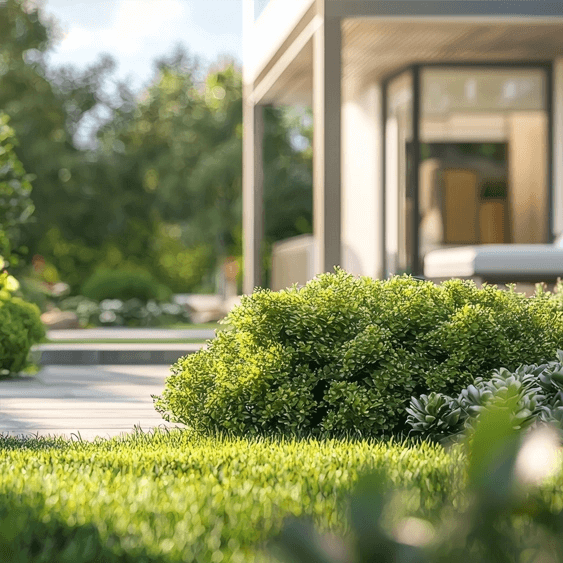Trees are more than just natural shade-providers—they’re living landmarks in your
landscape. Properly integrating them into your garden design not only enhances aesthetics
but also improves ecosystem health, provides habitat, and reduces soil erosion. Whether
your yard features towering oaks, graceful maples, or ornamental cherries, designing
around trees requires intentionality.

1. Respect the Root Zone
Tree roots extend well beyond the visible canopy. Disturbing them with heavy digging or
construction can stress or even kill the tree. Create beds that:
– Avoid deep tilling or excavation
– Use mulch instead of concrete or stone
– Maintain good air and water permeability
A good rule is to stay at least 1.5 feet away from the trunk for every inch of trunk diameter
2. Define with Mulch Beds
A circular mulch bed under the canopy looks clean and professional while protecting the
root system. Choose organic mulch like bark, pine straw, or composted wood chips. Keep
mulch 3–6 inches deep, but never pile it against the trunk (avoid ‘mulch volcanoes’).
3. Choose the Right Understory Plants
Low-growing ground covers add color while minimizing weeds and erosion. Consider:
– Vinca minor (periwinkle)
– Pachysandra terminalis
– Ajuga reptans (bugleweed)
– Sweet woodruff
These plants spread over time and thrive in dappled or full shade.
5. Add Seating and Structure
Trees provide a natural backdrop for cozy seating areas. Try:
– Curved benches that follow the canopy
– Hammocks tied to strong trunks
– Swing chairs for relaxed lounging
Use permeable materials like flagstone or gravel to support traffic without harming roots.
6. Highlight Trees with Lighting
Outdoor lighting can turn a beautiful tree into a stunning nighttime feature. Uplighting with
warm LEDs can showcase texture and shape. Use:
– In-ground well lights
– Tree-mounted fixtures (avoid nail holes!)
– Solar lanterns hanging from branches
Use indirect lighting to avoid glare and preserve wildlife routines.
7. Integrate Paths Carefully
Paths that lead around or past trees enhance usability and aesthetics. Ensure paths:
– Are curved to follow natural root patterns
– Are made of gravel, mulch, or stepping stones
– Sit slightly elevated to allow water flow underneath
Avoid continuous concrete slabs, which can compact soil and block oxygen.
7. Maximize Shade and Shelter
Too much sun can make any space uncomfortable. Add:
– A pergola draped with vines
– Umbrellas that can tilt
– Retractable awnings or shade sails
Even a tall potted tree can provide natural shade and structure.
8. Manage Watering Thoughtfully
Trees often compete with nearby plants for water. To keep both thriving:
– Use drip irrigation under mulch
– Water early in the day
– Group shade-tolerant plants together
In dry climates, consider native drought-tolerant species.
10. Keep It Natural and Wild
Don’t fight a tree’s natural aesthetic. Let its limbs define garden lines. Embrace fallen leaves
as mulch. Allow for understory plant succession. A slightly ‘untamed’ look around trees
mimics nature and supports wildlife.
Trees as Anchors of Design
A well-integrated tree isn’t just an obstacle to work around—it’s an anchor for your entire
landscape design. From shade plants and mulch beds to creative seating and lighting,
designing around trees can make your yard feel mature, serene, and inviting.
With careful planning and tree-friendly materials, your leafy companions can become the
proud centerpiece of a thriving backyard ecosystem.




